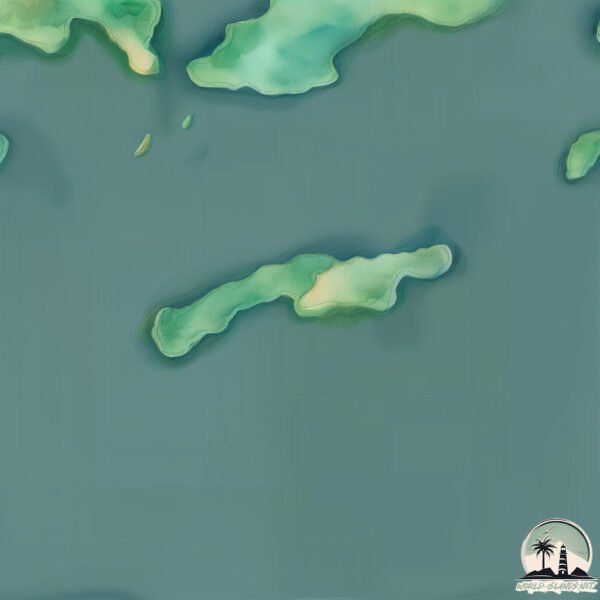Welcome to Pantoja , a Temperate island in the North Pacific Ocean, part of the majestic Pacific Ocean. This guide offers a comprehensive overview of what makes Pantoja unique – from its geography and climate to its population, infrastructure, and beyond. Dive into the details:
Geography and size of Pantoja
Size: 0.182 km²Coastline: 4.1 kmOcean: Pacific OceanSea: North Pacific OceanContinent: North America
Pantoja is a Tiny Island spanning 0.182 km² with a coastline of 4.1 km.
Archipel: –
Tectonic Plate: North America – Covers North America and parts of the Atlantic and Arctic Oceans, characterized by diverse geological features and varying levels of seismic activity.
The geographic heart of the island is pinpointed at these coordinates:
Climate and weather of Pantoja
Climate Zone: TemperateClimate Details: Temperate Oceanic ClimateTemperature: Warm Summer
Climate Characteristics: Known for its moderate year-round temperatures with ample rainfall and no dry season. Warm summers are characteristic.
Topography and nature of Pantoja
Timezone: UTC-08:00Timezone places: America/Los_AngelesMax. Elevation: 0 m Mean Elevation: -7 mVegetation: Evergreen Needleleaf ForestTree Coverage: 97%
The mean elevation is -7 m. The highest elevation on the island reaches approximately 0 meters above sea level. The island is characterized by Plains: Flat, low-lying lands characterized by a maximum elevation of up to 200 meters. On islands, plains are typically coastal lowlands or central flat areas.
Dominating Vegetation: Evergreen Needleleaf Forest
Vegetation: 1 vegetation zones – Minimal Diversity Island
Infrastructure and Travelling to Pantoja
Does the island have a public airport? no .
Does the island have a major port? no .
The mean population of Pantoja is 0 per km². Pantoja is Uninhabited. The island belongs to Canada .
Continuing your journey, Nootka is the next notable island, situated merely km away.
LUCÍA hace LLORAR al JURADO con un tema de ISABEL PANTOJA | Los Rankings 1 | Idol Kids 2020
Tras conquistarnos con sus increíbles voces durante nuestra primera fase, por fin, ha llegado el momento: ¡comienzan «Los ...
LUCÍA hace LLORAR al JURADO con un tema de ISABEL PANTOJA | Los Rankings 1 | Idol Kids 2020
Tras conquistarnos con sus increíbles voces durante nuestra primera ...
Tras conquistarnos con sus increíbles voces durante nuestra primera fase, por fin, ha llegado el momento: ¡comienzan «Los ...
Fight Replay: Alexandre Pantoja vs. Hiromasa Ogikubo | THE ULTIMATE FIGHTER
Ronaldo Candido faces off with Eric Shelton. SUBSCRIBE to get the ...
Ronaldo Candido faces off with Eric Shelton. SUBSCRIBE to get the latest content from The Ultimate Fighter: ...
Nuevo VARAPALO JUDICIAL deja al LÍMITE a ANABEL PANTOJA y a DAVID RODRÍGUEZ el CASO no se CIERRA
EL CANAL DE MI MUJER: "SALSEANDO CON LAURA" ...
Canada is classified as Developed region: G7: Group of Seven – Major advanced economies, including Canada, France, Germany, Italy, Japan, the United Kingdom, and the United States. The level of income is High income: OECD.
News – Latest Updates and Headlines from Pantoja
Stay informed with the most recent news and important headlines from Pantoja. Here’s a roundup of the latest developments.
Loading...
Please note: The data used here has been primarily extracted from satellite readings. Deviations from exact values may occur, particularly regarding the height of elevations and population density. Land area and coastline measurements refer to average values at mean high tide.

